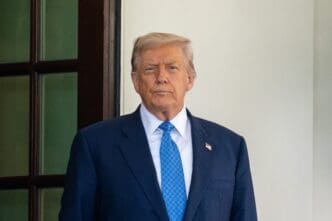Executive Summary
- President Trump asserts he ended “six wars” during his tenure, promoting himself as a “President of Peace” and citing various diplomatic achievements.
- While some of Trump’s interventions played a role in de-escalating conflicts or brokering initial agreements, many of his claims are described as exaggerated, representing ceasefires or economic normalization steps rather than permanent peace deals with unresolved underlying issues.
- Concerns are raised about the long-term success of these efforts due to their fragility, the involvement of other international bodies in brokering, and questions about Trump’s focus on political gain over sustained diplomatic solutions.
The Story So Far
- President Trump frequently positions himself as a “President of Peace,” a narrative reinforced by the White House’s highlighting of his diplomatic achievements, including claims of ending “six wars.” These declarations, though often characterized by “classic Trumpian hyperbole” and representing initial agreements rather than full peace treaties, serve to underscore his unique approach to international conflict resolution and his administration’s efforts to de-escalate global tensions.
Why This Matters
- While President Trump’s claims of ending “six wars” are largely characterized by hyperbole, the article notes his administration did play a role in de-escalating some conflicts or brokering initial agreements, demonstrating a unique approach to diplomatic engagement. However, many of these “peace deals” are described as fragile ceasefires rather than permanent resolutions, often leaving core disputes unresolved, which raises questions about their long-term efficacy. Furthermore, concerns are highlighted regarding the potential impact of the “downsizing” of US diplomatic institutions on the nation’s ability to translate initial breakthroughs into lasting peace agreements.
Who Thinks What?
- President Donald Trump and the White House assert that he ended “six wars” during his tenure and achieved significant diplomatic agreements, presenting him as a “President of Peace.”
- Analysis by Stephen Collinson suggests that while President Trump’s administration played a role in de-escalating some conflicts or brokering initial agreements, many of his claims are characterized as “classic Trumpian hyperbole” and are closer to ceasefires than permanent peace agreements, with underlying issues often remaining unresolved.
President Donald Trump has asserted that he ended “six wars” during his tenure, a claim he reiterated during a recent meeting with Ukrainian President Volodymyr Zelensky and European leaders. These declarations, spanning conflicts across the Middle East, Africa, and Asia, are presented by the White House as evidence of Trump’s role as a “President of Peace” and part of a broader effort to highlight his diplomatic achievements.
Trump’s Claims and Context
The White House has publicly proclaimed Trump as the “President of Peace,” listing purported diplomatic agreements. These include pacts between Armenia and Azerbaijan; Cambodia and Thailand; Israel and Iran; Rwanda and the Democratic Republic of the Congo; Egypt and Ethiopia; and Serbia and Kosovo. The Abraham Accords, a normalization agreement signed during Trump’s first term between Israel and some Arab states, are also cited.
According to an analysis by CNN’s senior reporter Stephen Collinson, while some of these claims exhibit “classic Trumpian hyperbole,” President Trump has, in some instances, used presidential power in novel ways to prevent conflicts from escalating into full-scale wars, potentially saving lives. The analysis notes that every administration works to halt wars, but Trump’s approach often involves “constant victory laps.”
Specific Engagements and Outcomes
Armenia and Azerbaijan
A significant achievement cited is the joint peace declaration between Armenia and Azerbaijan regarding their long-running conflict in the Caucasus. Signed at a White House ceremony, the agreement commits both former Soviet republics to recognizing each other’s borders and renouncing violence. However, complex negotiations on constitutional and territorial issues remain before a full peace agreement can be reached, and the deal included the establishment of a “Trump Route for Peace and Prosperity.”
Cambodia and Thailand
In Southeast Asia, Trump is credited with threatening to shelve trade deals with Thailand and Cambodia to help halt a border war that resulted in at least 38 deaths. While Trump’s leverage was effective, the agreement was also brokered by the Association of Southeast Asian Nations (ASEAN).
India and Pakistan
Trump intervened in a border clash between India and Pakistan in May. While the intervention was part of a diplomatic effort to influence Trump, the government of Indian Prime Minister Narendra Modi reportedly dismissed Washington’s claims of a pivotal role. The agreement remains fragile and does not resolve the underlying territorial dispute over Kashmir, which has historically led to three full-scale wars.
Rwanda and the Democratic Republic of the Congo
Trump has proclaimed a “glorious triumph” in a deal between Rwanda and the Democratic Republic of Congo. This agreement includes important initial steps, such as recognizing borders, renouncing war, and disarming militia groups. However, the main Rwanda-backed M23 rebel group has rejected the agreement, and some analysts suggest the initiative, also brokered by Qatar, may be linked to US efforts to secure mineral rights.
Egypt and Ethiopia
The claim of brokering peace between Egypt and Ethiopia refers to a dispute over a Nile dam. While Trump has called for a deal, no binding agreement has been reached to resolve Egypt’s concerns about its share of the key strategic waterway.
Serbia and Kosovo
White House claims regarding Serbia and Kosovo stem from economic normalization steps agreed upon during Trump’s first term. Despite these steps, the two entities still lack full diplomatic relations 17 years after Kosovo declared independence from Serbia. Recent normalization efforts have also seen significant involvement from the European Union, beyond the Trump team.
Unresolved Conflicts and Broader Implications
The analysis points out that some of Trump’s claimed “six wars” deals are closer to ceasefires than permanent peace agreements. For instance, the claim of peace between Israel and Iran after a 12-day conflict is complicated by ongoing US involvement in strikes against Tehran’s nuclear program, with no sign of an end to the broader state of conflict.
The analysis also notes Trump’s failed attempt to end the conflict between Israel and Hamas, and his first-term peace efforts with North Korea, which saw Leader Kim Jong Un acquire more nuclear weapons. Questions are raised about whether Trump’s focus is on long-term solutions or primarily on deals that can be highlighted for political gain. Concerns are also noted regarding the potential impact of Trump’s “evisceration” of USAID and “downsizing” of the State Department on the US’s ability to turn breakthroughs into lasting peace agreements.
While President Trump’s claims of ending six wars are characterized by the analysis as often exaggerated and less substantial than they appear, his record does include tangible achievements where his administration played a role in de-escalating conflicts or brokering initial agreements. The long-term success of these efforts, however, depends on sustained application and patience, a lesson that could apply to ongoing diplomatic initiatives, including those concerning Ukraine.








